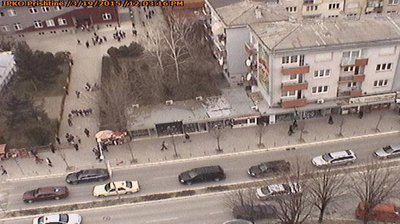
WEIGHT: 53 kg
Bust: Large
1 HOUR:80$
NIGHT: +50$
Sex services: Blow ride, Watersports (Giving), Lapdancing, Role Play & Fantasy, Moresomes
Gresa is an executive director of Space SyntaKs, a research institute from Pristina which focuses on social phenomena in public spaces. The organisation formed from a group of activists who wanted to improve the availability of spatial data and practical training for GIS skills in Kosovo. SafoMeter is one of the first projects Space SyntaKs decided to work on.
The project is focused on evaluating the safety of public spaces, especially for marginalised groups like women and ethnic or religious minorities. In the last four or five years we had a lot of cases of physical and sexual violence against women in the city. We found that there were specific characteristics of places where incidents were happening. We also wanted to see what parts of normal life were impacted by safety in public spaces.

Gresa and the project team identified eight characteristics that appeared to impact the safety of public spaces:. Once they had identified the characteristics they wanted to focus on for their research, they needed to collect data. They found that aside from data on the presence of public institutions, there was no data available for the other criteria and they would need to collect this information themselves.
Space SyntaKs brought in a team of students from the faculties of Geography and Architecture at the University of Pristina to help with the data collection. They decided to use Mergin Maps, which was still called Input at the time, for the data collection on the recommendation of Besfort Guri.

They had a two-week training programme for the students to teach them how to collect the physical and qualitative survey data, so they needed an app that was easy to use but was also able to handle complex spatial data. In Mergin Maps, point data was used to mark the location of street lights, security cameras and public institutions. They also used forms to link attributes about the functionality and ownership of the lights and cameras. Forms were also used to collect the qualitative survey data and link it to the public spaces.


































